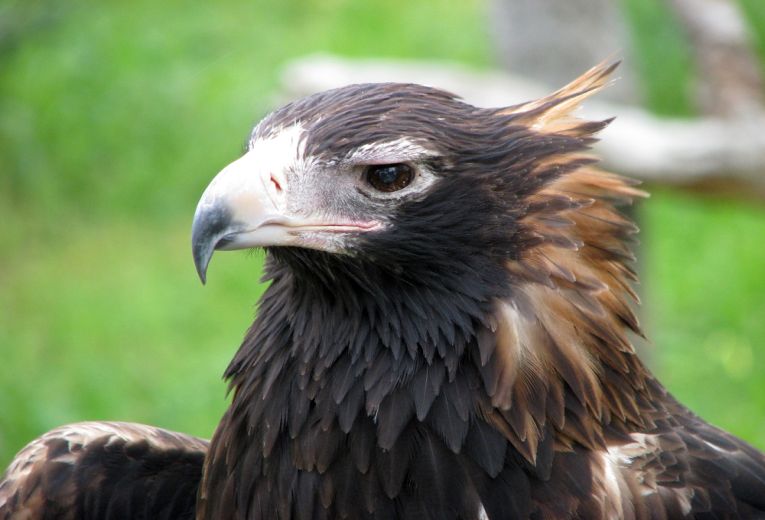Were eagles to dare to fly across the Bass Strait, they would find other wedge-tailed eagles, Aquila audax already resident. Any interbreeding would prevent too much divergence between the two populations, but it seems there is divergence and the two populations rarely, if ever, interbreed. Such science has remarkable relevance to every other species on earth, determining how quickly speciation can take place, even in relatively long-lived animals or plants like the eagle. The species lives for about 20 years in the wild.
In the Pleistocene, the shallow Bass Strait was last pierced by Australian fingers of land, now reaching a width of 240km (nearly 150 miles.) It was then that several bird species last saw their relatives on the other side of the sea. The eagles must have been able to cross for a while, but their habitat conveniently ranges from desert to grassland and mountain. Nowadays, juveniles have been seen at the Tasmanian coast and on King Island, but the genetics proves that mingling, even for teenagers, is rarely achieved, if ever! So the species is now split into audax (Australian) and fleayi (Tasmanian) subspecies.
To work out the genetic divergence, 224 individuals were sampled using frozen material and even the feathers of museum specimens. 12 nucleotide positions on mitochondrial DNA proved to be variable between the island and the mainland populations. Variation was also much less within the Tasmanians, giving them a high, "inbreeding coefficient." So this very recent isolation at a maximum of 13kya has produced an island population that bred with mainland birds much more recently than that. Now though, it seems the subspecies is fixed and receives few if any migrant additions.
Marine migration is inferred, just as the swamp harrier, Circus approximans seems to have colonised New Zealand 1000 years ago. Human interference can be discounted because the species was spotted a few times on Tasmania in 1836, only 33 years after colonisation. The aboriginal, "nairana" is also thought to be this species and the darker colour of many Tasmanian eagles suggests a genetic colour deviation although the probable size difference is disputed. More important is the likelihood of inbreeding depression in what is now an endangered subspecies of bird. Interbreeding with mainland birds may well be the best step forward, if the lack of fledgling success and the vulnerability to human interference among Tasmanian wedge-tails becomes critical.
Looking at other species, including Greek lizards, American butterflies or the Tasmanian fauna as a whole, we can learn a lot from the history of migration in many species. Given the precarious status of so many endangered animals and plants, the more that is known about gene flow among them, the more can be done to try and conserve as many as possible.
CP. Burridge from the University of Tasmania and his colleagues, present their paper in the Proceedings of the Royal Society B.










